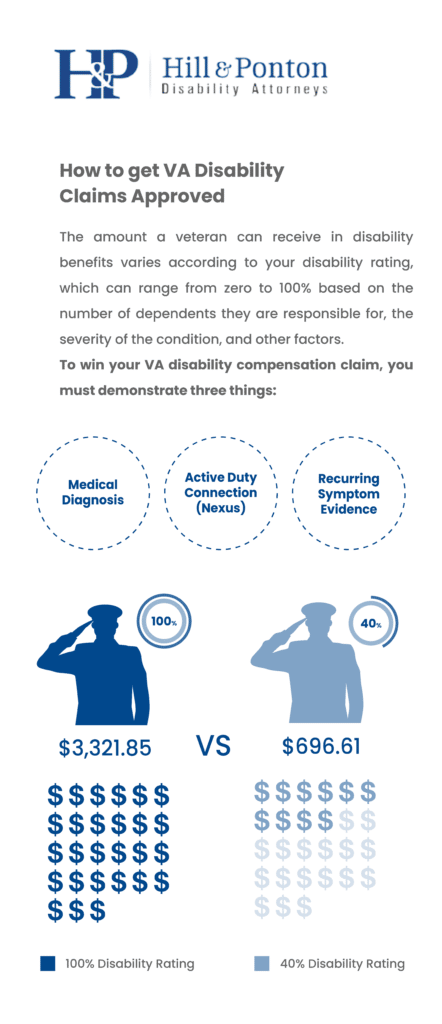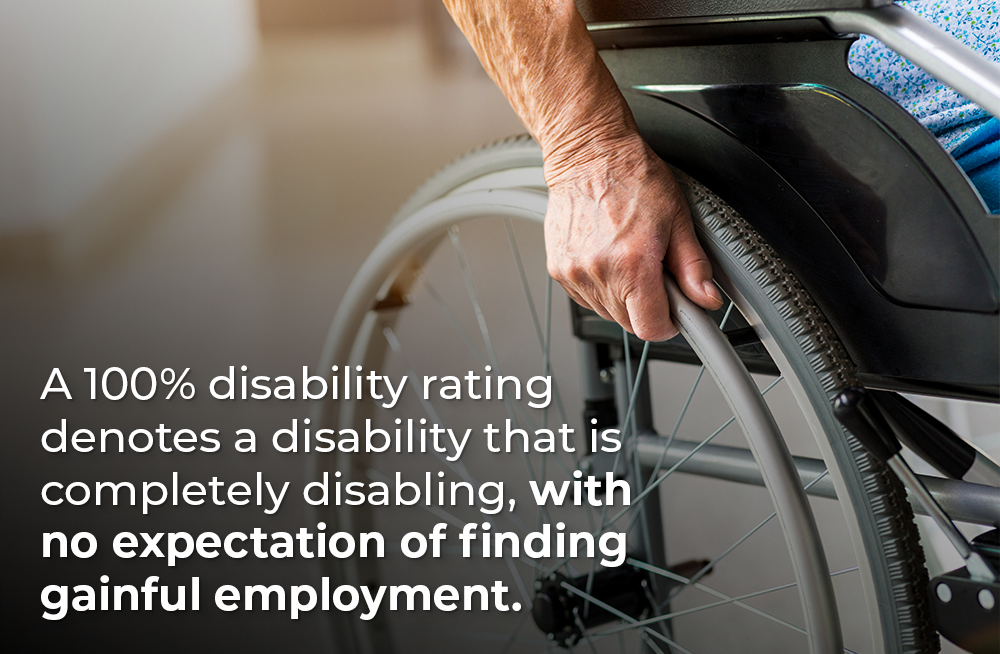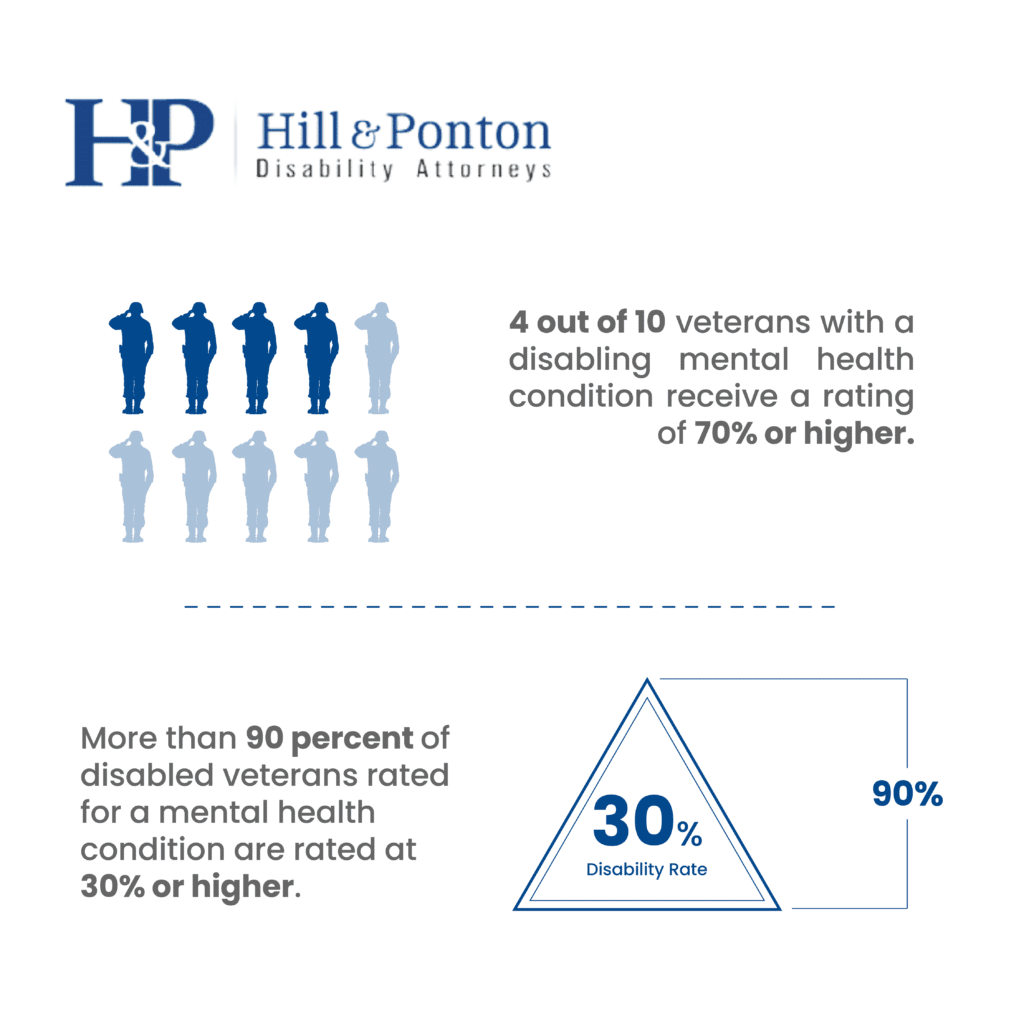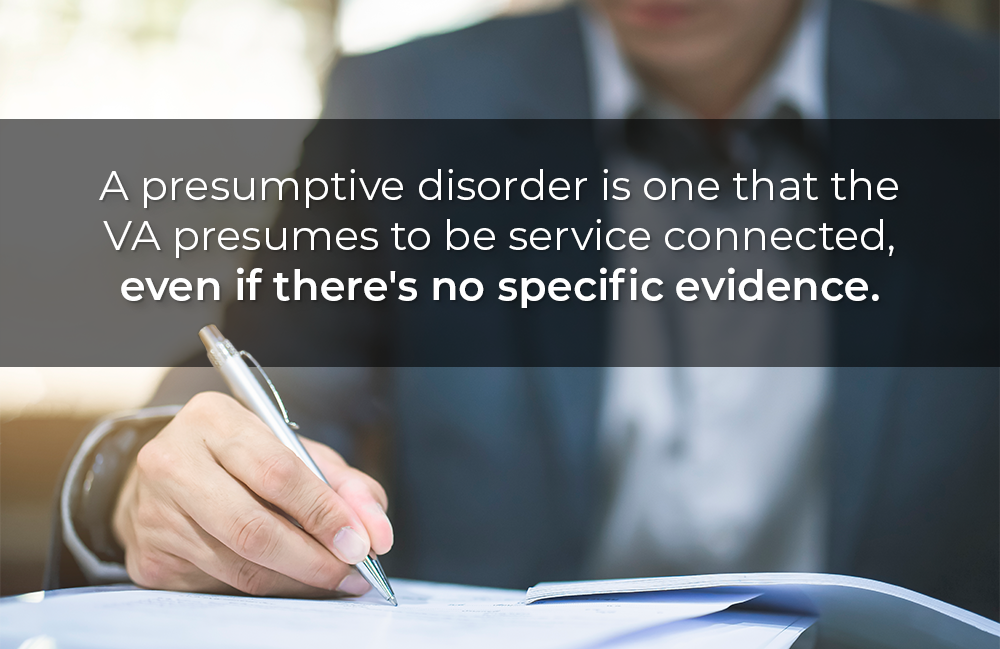Do I Have to See the Va Psychiatrist in Order to Continue Recieving My Va Disability Check
The Department of Veterans Affairs pays a monthly benefit, called disability compensation, to disabled veterans who incurred an injury or illness that can be associated with their military service.
The amount a veteran can receive in disability benefits varies according to your disability rating, which can range from zero to 100% based on the number of dependents they are responsible for, the severity of the condition, and other factors.
A 100% disability rating denotes a medical condition that is completely and totally disabling, leaving the individual with no expectation of finding gainful employment.
As of 2022, if a disabled veteran with a spouse and no children has a 100% VA disability rating, he or she would be entitled to a monthly disability compensation payment of $3,321.85 (tax-free).
Even a much less severe medical condition that results in a lower disability rating of 40% would entitle them to $696.61 per month for as long as the service-related disability persists. As discussed above, monthly compensation for service members varies directly based on the disability rating they are assigned by the VA.

So, if you have a service-related disabling medical condition that qualifies for VA disability compensation, it's worthwhile to pursue it.
However, with some conditions, proving a connection to military service can be tricky. Additionally, some conditions are more easily diagnosed than others and can quality a veteran for a higher rating or increased eligibility.
Three Criteria Required for VA Disability Approval

To win your VA disability compensation claim, you must demonstrate three things:
- a medical diagnosis,
- a connection to active duty military service (nexus), and
- medical evidence of recurring or persistent symptoms.
If you don't score on each of these criteria, you won't get approved for VA disability or compensation benefits.
Commonly Awarded Disability Compensation Claims
According to a recent Veterans Administration report to Congress, the ten most commonly awarded medical conditions that are getting approved for benefits are as follows:
- Tinnitus
- Limitation of flexion (knee)
- Hearing loss
- Lumbosacral or cervical strain (back and neck strains)
- Limitation of arm motion
- General scars
- Limitation of ankle motion
- PTSD
- Migraines
- Paralysis of the sciatic nerve
Of these, tinnitus was the runaway winner, with 157,152 newly-awarded claims, according to the 2018-2019 Veterans Benefits Administration's Report to Congress. The runner-up, Limitation of flexion in the knee, accounted for 99,467 new claims while hearing loss resulted in 76,102 new claims during the reporting period.
VA Disability for Tinnitus
Tinnitus is better known as a "ringing in the ear" syndrome. Many veterans are familiar with it from firing weapons without hearing protection or being near explosions: It's routine to experience a high-pitched ringing in the ear for a few seconds after being exposed to very loud noises.

f you have tinnitus, you hear sounds that don't exist internally, and you hear them persistently, over long periods of time. The sounds may include ringing, clicking, roaring, humming, or hissing. It can occur with ordinary age-related hearing loss.
The VA may pay benefits for tinnitus, but the highest rating you can receive for tinnitus alone is 10%. Disability compensation professionals regard tinnitus as a "low value" claim for this reason. But if you have other service-connected medical issues, you may qualify for a higher disability rating, as VA doctors combine your tinnitus rating with other ratings.
However, tinnitus is among the easiest VA disability benefits to get approved. If you have an existing condition that has been proven to be service-connected, tinnitus can help to increase your total disability rating, granting you additional compensation.
First, it's subjective. There's no definitive test for it. Unlike other conditions that can only be approved if there is a good deal of objective medical evidence for the claim, tinnitus is on the honor system. If you say you have tinnitus, it's impossible to disprove it with medical evidence alone.
So it's much easier for the disabled veteran to get a diagnosis of tinnitus, and meet the Veterans Administration's first major criteria for qualifying for disability benefits.
Possible complications to tinnitus
The following conditions may contribute to your tinnitus issues:
- Anxiety
- Depression
- Meniere's disease
- Traumatic brain injuries (TBIs)
- Hearing loss
- Hypertension (high blood pressure)
- Head and neck conditions
For example, high blood pressure (hypertension) can aggravate tinnitus, as can head and neck conditions and traumatic brain injuries, or TBIs.
Tip: If you're already rated for one of these conditions, but not for tinnitus, it may make sense to put an additional VA disability claim for tinnitus as a secondary condition. Because you've already proved to the VA's satisfaction that you have one of these disabling medical conditions and that there is a service connection to them, you have a very high likelihood that your application for tinnitus benefits will get approved.
Obviously, most veterans have been exposed to loud noises while in the service – either in loud training and operational environments or by exposure to explosions and gunfire. For this reason, veterans are among the highest risk for tinnitus.
Mental Health Conditions and Most Common VA Disability Percentages
Not all scars are visible. Many veterans have significant service-connected mental health issues.

PTSD is perhaps the most well-known of them, but there are many others, including:
- Depression
- Anxiety
- Somatic symptom disorder
- Military sexual trauma
Disabling mental health conditions are generally regarded as "high-value" claims. This is because mental health issues are much more likely than neurological, skin, auditory, or most musculoskeletal conditions to receive a disability rating of 30% or higher. In fact, more than 90 percent of disabled veterans rated for a mental health condition are rated at 30% or higher.
4 out of 10 veterans with a disabling mental health condition receive a rating of 70% or higher.
This makes them much more lucrative to pursue than most other medical conditions: According to the 2018-2019 Veterans Benefits Administration Report to Congress, over 13% of disabled veterans with mental health conditions were assigned a 100% disability rating. Cardiovascular conditions, in contrast, only qualified disabled veterans for a disability rating of 100% just 13% of the time. Respiratory diagnosis only resulted in a 100% disability rating 1.9% of the time.

Additionally, mental health conditions qualified the veteran for a 30% disability rating 23.7% of the time, for a 50% disability rating 25.9 % of the time, and for a 70% disability rating 28% of the time.
Again, post-traumatic stress disorder, or PTSD, is quite subjective. There is no definitive test for it, so it's an easy claim to assert, and one that's next to impossible for VA officials to disprove with medical evidence alone.
Secondary Service Connection for Mental Health
Tip:Many service-related medical conditions can cause or aggravate a mental health condition. So if you're already rated for another condition, or considering applying for VA disability compensation for another issue, consider filing a claim for the accompanying mental health issue.
For example, your tinnitus may cause you to be unable to sleep, or function during the day. This, in turn, could cause or aggravate depression or anxiety. In this case, your secondary claim – depression or anxiety disorder – could well result in a more significant disability rating than your primary issue.
The same is true for service-connected back injuries, migraines, knee and ankle injuries, scars, and anything that causes chronic pain or disfigurement.
In recent years, the VA has responded to political pressure to be more understanding of veterans presenting with PTSD and military sexual trauma. If this is relevant to you, consider putting together your documentation and filing a claim.
Musculoskeletal conditions and VA Disability rating percentages
These include strains, sprains, arthritis, reduced flexion, and reduced functionality in arms, legs, back, and neck. Most former infantry will not be surprised to learn that knee and ankle injuries were among the most commonly-approved claims.
To be considered for disability benefits for a musculoskeletal disorder or injury, you'll want to be able to show some persistent and recurring symptoms. Common symptoms of musculoskeletal injuries or disorders include:
- painful motion
- limitation of flexion or reduced range of motion (ROM)
- weakness/fatigue in the extremity
- loss of power
- loss of movement control or coordination

Again, while musculoskeletal conditions are assigned a VA disability rating of 20% or less more than 90% of the time, you can also claim them as a secondary condition.
Musculoskeletal aggravation from other conditions
Musculoskeletal issues can be aggravated by any of these conditions:
- TBI
- medication side effects
- PTSD
- Depression
- Injuries in other areas of the body (forcing you to overcompensate).
If you are rated for any of these issues as a primary medical condition, you may be able to put in a VA disability application for a musculoskeletal issue. Depending on the circumstances, this could get you another 10% to 20% added to your disability rating.
Unfortunately, the vast majority of these claims receive a VA disability rating of 20% or less.
Scars and VA disability benefits
The VA assigns a disability rating for scars, from 10% up to 80%. While the scarring has to be quite significant in order to get rated for VA disability compensation, it's usually a simple matter to get qualifying scars approved. There's usually little doubt about a military service nexus. Injuries incurred on active duty that are significant enough to rate disability compensation are almost always documented in the military service record.
Additionally, scar tissue can occasionally result in reduced arm, leg, back, or neck mobility, resulting in a qualifying secondary condition under the musculoskeletal heading, above.

VA Disability Percentages for Presumptive Disorders
A presumptive disorder is one that the VA presumes to be service-connected, even if there's no specific evidence or chain of causation that they normally require to form a nexus with military service. A presumptive disorder is a term that the VA uses to describe medical conditions that were so common among veterans in certain situations that they are considered undoubtedly to be due to active duty, exposure or service.
Agent Orange Presumptions
For the vast majority of Vietnam War veterans, the VA considers the following conditions to be presumptive:
- AL amyloidosis
- B-cell leukemia
- Chronic lymphocytic leukemia
- Type 2 diabetes
- Hodgkin's disease
- Ischemic heart disease
- Non-Hodgkin's lymphoma
- Parkinson's disease
- Prostate cancer
- Respiratory cancers
- Soft-tissue sarcoma (not including osteosarcoma, chondrosarcoma, Kaposi's sarcoma, or mesothelioma)
- Chloracne or another similar acneform disease
- Porphyria cutanea tarda
If you served in Vietnam between Jan. 9, 1962, and May 7, 1975, and you are diagnosed with any of these conditions, you don't have to show a service connection. Because of widespread exposure to Agent Orange, the VA presumes that these conditions are service-connected. You have an excellent chance of getting these claims approved and earning a higher percent rating according to VA math.
You also have an excellent chance of getting secondary diagnoses approved for benefits, though you will need to document those thoroughly.
The VA has defined a number of other conditions as presumptive for Gulf War veterans, Atomic veterans, and former prisoners of war. See this VA page for full details on presumptive conditions.
Percentage of Vets Claims Approved
Per the VA's own data, they report 2018 as one of the most successful years for the VA's decision-making team. The number of veterans claims approved in 2018 was around 35.75 percent. In that 35.75% , 19.61% were approved with zero remand issues, and 16.14% were allowed with at least one remand issue.
If 2018 is any indication, less than half of service member's disability claims are approved. To be in the successful 35.75% of claims it is important to fully fill out your claims paperwork and provide as much documentation as possible.
Document to Increase Your VA Disability Pay
The more health care information you have on file when you file for a VA disability claim, the better. To maximize your chances of getting your claims approved and earning increased compensation rates, documentation is critical.
If you're still in the service, try to get your injuries or other disabling medical connections documented in your military medical records. If you are out of the service, work with your personal physician to diagnose your condition, and document the severity and persistency of your symptoms.
Also, stay in close touch with your comrades. When filing a claim, you may need one or more of them to file a "buddy letter" as a witness to the event or events that caused your disabling medical condition. In addition, a law firm can assist you in completing your veterans disability claim or walk you through the appeals process.
Source: https://www.hillandponton.com/top-va-disability-claims/
0 Response to "Do I Have to See the Va Psychiatrist in Order to Continue Recieving My Va Disability Check"
Post a Comment